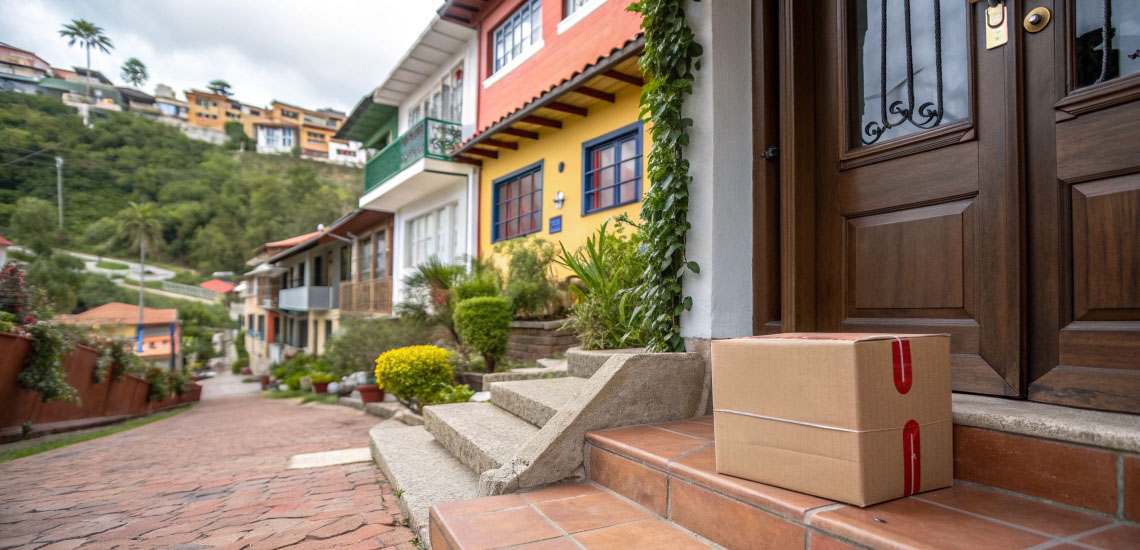Un terreno fértil, ideal y propicio para apostarle al crecimiento económico del e-Commerce.
Impulsado por la pandemia del COVID-19 y la necesidad de los usuarios de obtener sus productos sin tener que salir de casa, las ventas on-line tuvieron un crecimiento exponencial en la región, motivando a las diferentes industrias, a hacer la transición de lo manual a lo digital.
Según el “Reporte de industria: el ecommerce en Colombia 2020” de BlackSip, Brasil, México, Argentina y Colombia (y en ese mismo orden), fueron los países de mayor crecimiento en materia de comercio electrónico en la región, durante el periodo de 2019-2020.
Del mismo modo, los países anteriormente mencionados más el combinado nacional de Chile, constituyen el 92% del TOTAL de las compras electrónicas de Latinoamérica. En estos países, se realizaron ventas por US$71.000 millones durante el 2020, lo que significó un aumento estimado de 1,4% respecto al 2019.
En su mayoría, los países de Latinoamérica, tienen una penetración superior al promedio mundial que está en 58%, a excepción de Honduras y Nicaragua.
El impacto ha sido tan positivo que Statista, prevé que la tendencia continúe para este 2021, proyectándose para el 2024, un crecimiento del 31% de los compradores on-line, alcanzando la cifra de 351 millones de usuarios en América Latina.
Cifras que no se alejan de la realidad, dado que, según el reporte de Ebanx, el número de usuarios de comercio electrónico en América Latina creció más de 30%. Si tomamos como ejemplo a Colombia, pasó del 43% en enero de 2020, a 55% en diciembre del mismo año el número de usuarios que hicieron uso del e-Commerce.
De acuerdo con Adriana Ceballos, directora de desarrollo de programas del Tanque de Análisis y Creatividad de las TIC (TicTac) de la Cámara Colombiana de Informática y Telecomunicaciones, se registraron 20 millones de transacciones en 2020 y se presentó un crecimiento de 130% del comercio electrónico en general en Colombia.
¿Sabías qué, el sector de carga y mensajería creció 39% a causa del aumento en operaciones de e-Commerce? Servicios que se tendrán que fortalecer con el pasar de los días ante la fuerte demanda de usuarios y comprados.
Sin lugar a dudas, el COVID-19 impulsó (y de gran manera), el uso del e-Commerce en América Latina, sin embargo, la necesidad se debía despertar en aquel usuario principiante en el mundo digital, aquella persona que dejara de lado su desconfianza y se adentrará en la “nueva ola”, y para ello, el departamento de Marketing Digital de cada compañía, cumplía con un rol fundamental en el objetivo final, vender.
Según estadísticas de Hootsuite a enero del 2021, en Colombia:
- 87% de los usuarios han buscado un producto en internet en el último año.
- 66% de los usuarios utilizan Apps de comercio electrónico y venta de productos.
- 67% de los usuarios realizaron compras on-line en 2020.
- 20% de los usuarios ya hacen pagos mediante billeteras móviles, Apple Pay o Móvil.
- La venta de comida llegó a una cifra récord de 60% de solicitud de pedidos en el último año.
No es para menos, que la inversión en pauta digital haya sido de US$320 millones en el 2020 y que el 66% de las marcas en el mercado, consideraran que su estrategia de Social media es clave en el plan de Marketing .
En Colombia, se pudo evidenciar que su Buyer Person es:
Hombre (58%), con un promedio de edad entre los 26 y 40 años (45%), vive en la ciudad de Bogotá (54%), es de estrato 3 y 4 (60%), su nivel educativo es universitario (36%) o de básica secundaria (20%), paga con tarjeta débito (65%) o crédito (35%), es soltero (50%) o casado-vive en pareja (43%) y sus categorías de compra más comunes fueron turismo (37%), moda (37%) y tecnología (36%).
Las empresas de mensajería y transporte de carga, fuimos directamente receptoras del comercio electrónico, intensificando nuestro modus operandi en pro del mercado nacional e internacional.
En Quick, registramos un crecimiento del 40% en 2020 y a la fecha, un 25% en lo que va del 2021, consolidando nuestra operación logística en Chile y México, brindando empleo a más de 10.000 Quickers bajo nuestra plataforma, y de esta forma, contribuir al crecimiento del comercio electrónico.
Y tú ¿Ya eres parte de la nueva ola?
No te dejes coger ventaja del mundo digital y haz parte de él.




